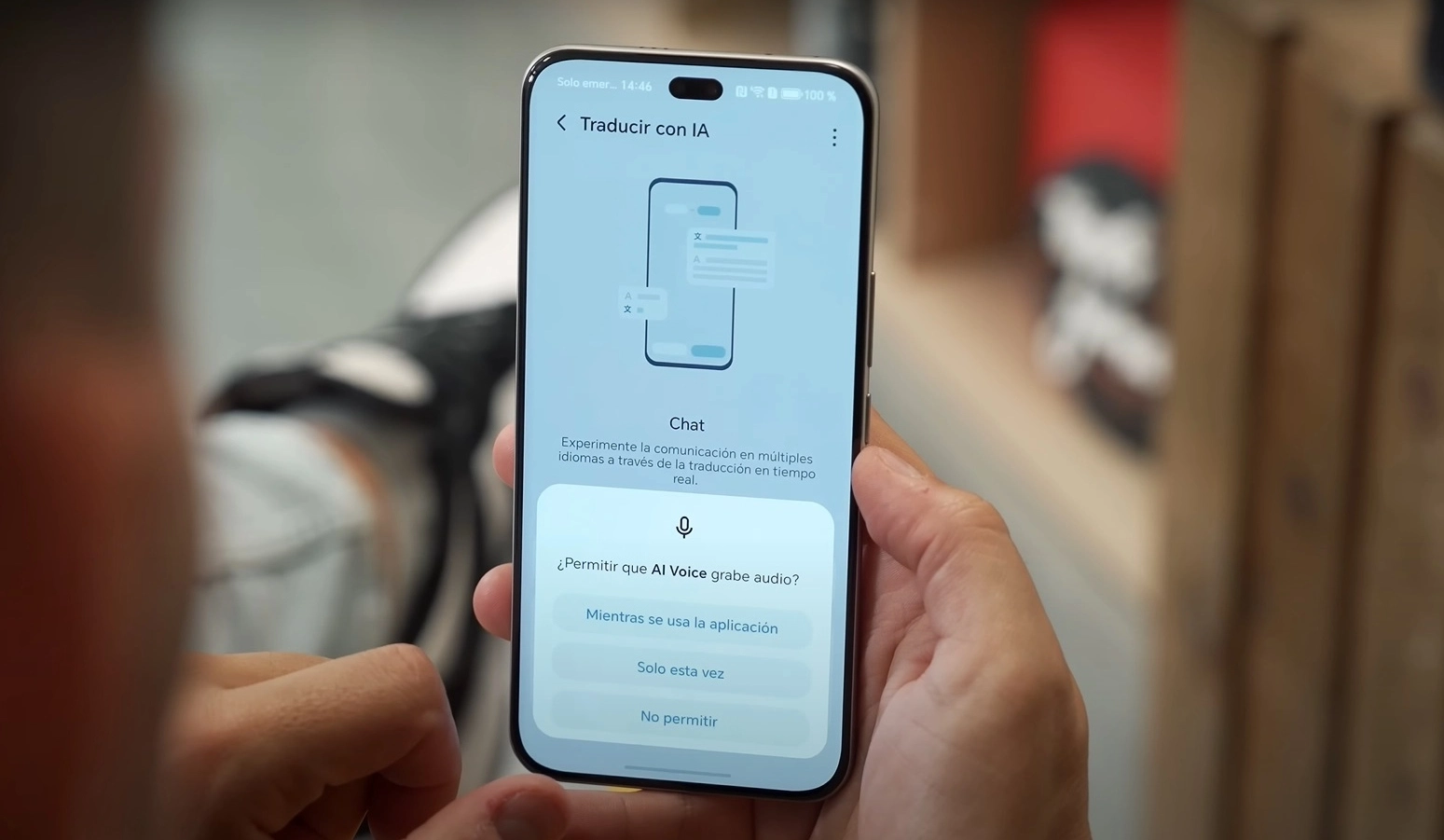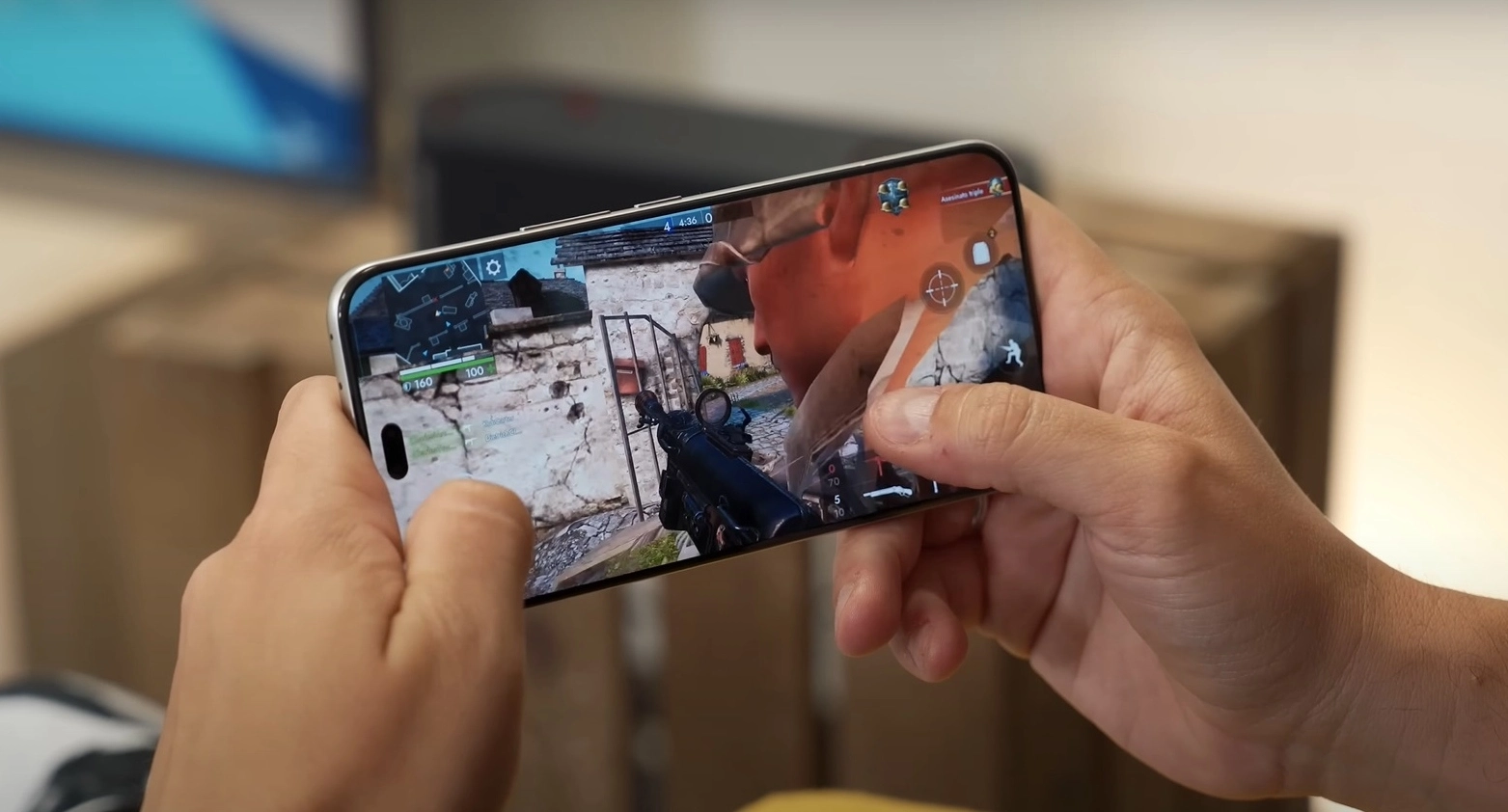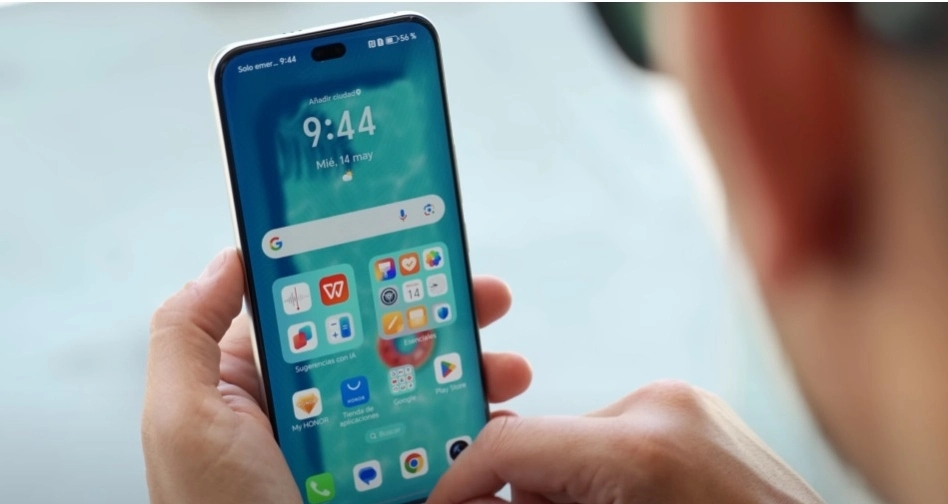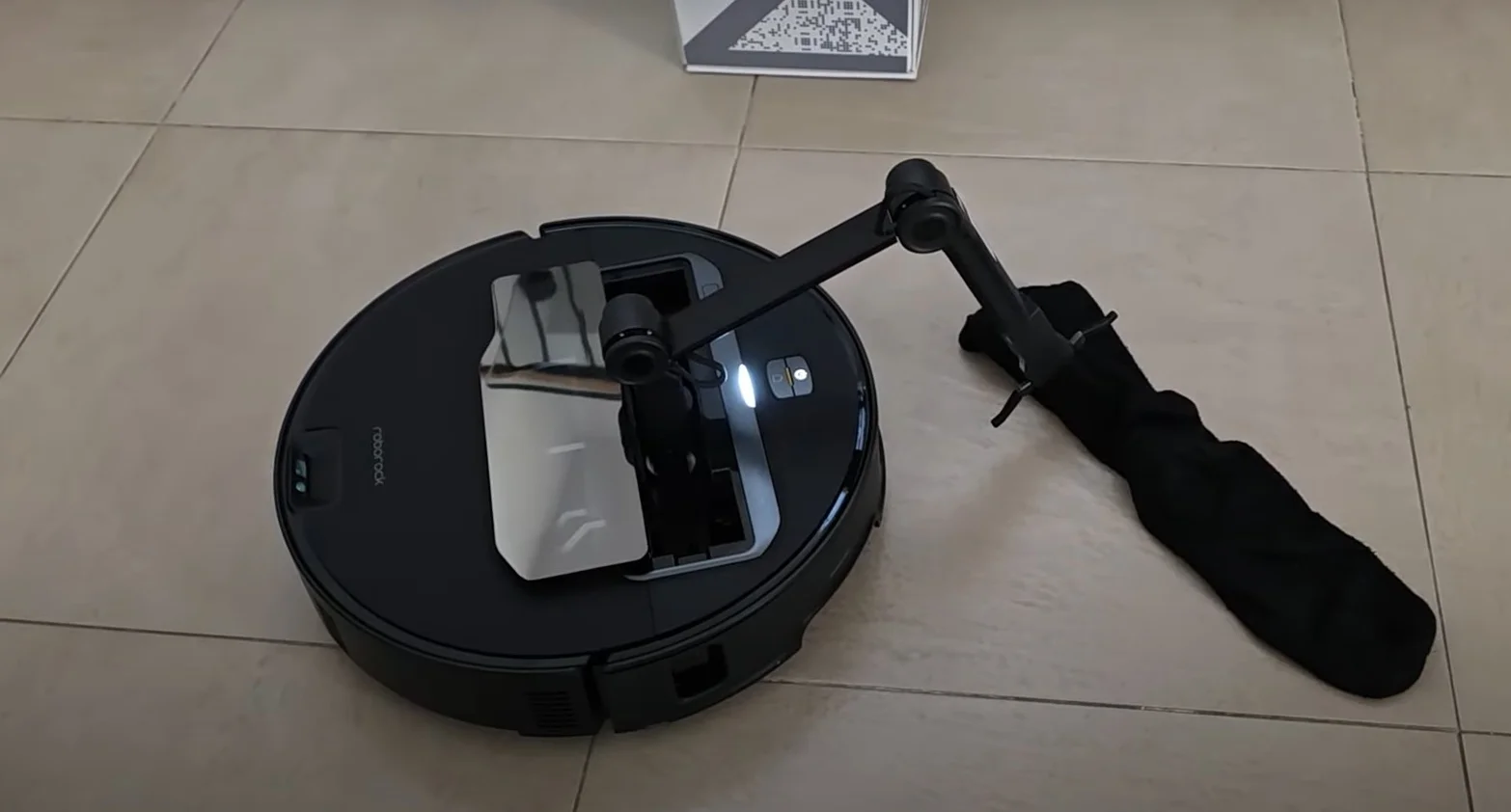Nowadays, we all want a mobile phone that looks good, but also has powerful cameras and runs fast, without having to spend a fortune. We want it all.
Honor has listened to our demands and has gone all out with this model: a 6.7-inch curved AMOLED screen, Snapdragon 8 Gen 3 processor, 200-megapixel main camera, and very fast charging. But is it really worth it?
Because, of course, it’s not alone in this fight. For example, the Samsung Galaxy S24 FE or even the new Realme GT 7 are just some of its direct rivals, so the competition is fierce and the price difference could be key in deciding which one to go for.
It’s worth mentioning that within the Honor family itself, we also have the 400 Lite, which is cheaper and works well for those looking for something simple but effective. However, the 400 Pro is aimed at an audience that wants a little more: better performance, better cameras, and a more premium experience.
Design: a premium leap that puts it on par with the big boys

As soon as you hold the Honor 400 Pro in your hand, you notice that the brand has wanted to go one step further in design. Forget the ‘iPhone-inspired’ style of the 400 Lite: here you have a phone with its own personality, more sophisticated lines and finishes that, honestly, feel high-end.
It feels great to the touch and, although it weighs 205 grams, which is not insignificant, the ergonomics are well designed so that it is not uncomfortable to use on a daily basis. The thickness of 8.1 mm helps it not feel bulky, even with the large battery inside.
But what really sets it apart is its durability: IP68 and IP69 certification, protection against dust, water, and drops, and a screen that responds even with wet hands. If you’re someone who uses your phone everywhere, you’ll really appreciate this.
That said, the camera module, due to the glass surrounding it, is too dirty, a fingerprint magnet, and if, like me, you have the black version, they tend to be a bit dirty and you can see every speck of dust.
On the other hand, the 6.7-inch curved AMOLED screen is a joy: 120 Hz refresh rate, 5,000 nits of maximum brightness, and 460 ppi. It looks spectacular in any situation, even in direct sunlight, and the visual experience is one of the best in this price range.
If you’re coming from an Honor 200 Pro, the jump to the 400 Pro is noticeable, but it’s not a radical change, just a very well thought-out evolution.
I already thought the Honor 200 Pro was a beautiful phone with personality, especially because of its ceramic-textured back and oval camera module, which, although I found strange at first, I ended up liking because it was different. The 400 Pro follows that line, but polishes the details and takes the premium feel one step further.
Performance: flagship power and plenty of battery life

This is where the Honor 400 Pro shines and sets itself apart from its siblings and much of the competition.
It has the Snapdragon 8 Gen 3, which is the same chip found in many of the top phones of 2024, so you can expect true high-end performance from just a few months ago.
It comes with 12 GB of RAM—plus another 12 GB virtual with Honor RAM Turbo—and 512 GB of storage.
I tried opening lots of apps at once, editing heavy photos, and playing games like Genshin Impact at high quality, and the phone didn’t even flinch. A true 10 in terms of performance and a huge leap forward from the 200 Pro.
The Android 15-based MagicOS 9.0 system is well optimized, customizable, and although it has some bloatware, the overall experience is positive despite everything. In addition, Honor guarantees six years of support and updates, which is not bad at all. You’ll have a phone for a long time.
The 5,300 mAh battery —in Europe; in other markets it reaches 6,000 mAh— is another strong point. It lasts a day and a half without any problems, even with intensive use, and the ultra-fast 100 W charging —plus 50 W wireless— is top notch: in less than half an hour you have it almost at 100%.
Cameras: the new benchmark in portrait photography and versatility with AI

The Honor 400 Pro hits the market promising to deliver a high-end photography experience in a mid-range device, featuring state-of-the-art sensors, artificial intelligence, and optimized image processing. However, upon closer inspection of its camera system, we found uneven performance with some highlights but also some clear limitations.
Configuration and specifications
The Honor 400 Pro is equipped with a triple rear camera system, led by a 50 MP main sensor with f/1.9 aperture, accompanied by an 8 MP ultra-wide angle and a 2 MP depth/macro sensor. On the front, it incorporates a 32 MP selfie camera, integrated into a discreet notch on the screen.
While the configuration looks promising on paper, especially the main sensor, the rest of the setup shows more conservative decisions on Honor’s part, especially in the ultra-wide-angle and secondary sensors, which add little real value to the photographic experience.
Performance in good lighting conditions
In daytime or brightly lit scenes, the main sensor delivers sharp images with good detail and relatively accurate color reproduction. The dynamic range is competent but not exceptional; there are difficulties in balancing light and shadow in high-contrast scenes, suggesting limited post-processing by the ISP (Image Signal Processor).
Color saturation tends to be artificially elevated in some scenarios, presumably as part of the artificial intelligence algorithm that seeks more visually appealing images, but this sometimes compromises the fidelity of the original color.
Night and low-light photography
This is where the Honor 400 Pro begins to show its shortcomings. Although it has an AI-assisted night mode, noise is evident even with digital stabilization enabled. Sharpness degrades significantly and exposure is inconsistent, especially in shots where there are artificial light sources (streetlights, screens, traffic lights), which tend to overexpose without effective flare or ghosting control.
The lack of optical stabilization (OIS) is noticeable, as it requires the device to be held very steady during long exposures, which affects usability in real-world scenarios.
Ultra-wide-angle lens and secondary sensors
The 8 MP ultra-wide-angle lens is perhaps the weakest point of the package. The loss of detail at the edges, chromatic noise, and distortion are noticeable, reducing its usefulness in demanding situations. Its inclusion seems more like a marketing strategy to fill out the spec sheet than a truly useful photographic tool.
The 2 MP macro sensor, as in many devices in this range, adds little value. Images lack sharpness, depth, and dynamic range, and its practical use is limited. A telephoto lens would have offered a much more versatile photographic experience.
Front camera
The 32 MP selfie camera delivers good results under favorable conditions, with well-represented skin tones and sufficient detail. However, the default beauty processing is excessive even when disabled, affecting the naturalness of portraits. In low light, noise is considerable and sharpness decreases rapidly, with no clear compensation from the software.
Video
When recording video, the Honor 400 Pro allows you to record up to 4K at 30 fps, but electronic stabilization (EIS) is not entirely effective. Shots in motion are jerky and blurry, and audio capture, while acceptable, is far from competing with more optimized models in this regard.
The Honor 400 Pro is worth it for its excellent premium design.

The Honor 400 Pro is an ambitious offering in the mid-to-high-end segment, seeking to attract users who prioritize design, performance, and battery life without reaching the prices of traditional flagships. Throughout the review, it becomes clear that the device delivers on many of its promises, but there is also room for more balanced evolution.
From a design perspective, the device stands out for its refined aesthetics, good finishes, and solid construction that conveys a sense of quality. The AMOLED screen with a high refresh rate offers a smooth and vibrant visual experience, ideal for multimedia content and everyday use, although it does not reach the calibration level of higher-end panels.
In terms of performance, the Honor 400 Pro responds with confidence. Its processor, accompanied by adequate RAM and fast storage, allows for smooth use in both multitasking and moderately demanding games. The MagicOS layer, while intuitive, still needs improvements in optimization and system updates, especially when considering direct competition from more polished interfaces such as One UI or MIUI.
Battery life is one of its strengths, with a battery that offers a full day of intensive use without difficulty, backed by efficient fast charging that significantly reduces waiting times.
However, the camera system is one of the most debatable aspects. Although the main sensor performs well in good lighting conditions, performance in more complex situations (low light, video, wide angle) reveals limitations in both hardware and processing. This leaves the device lagging behind competitors that offer more complete and versatile camera modules in the same price range.
Finally, its value for money is competitive, but not disruptive. While it offers a balanced package, there are alternatives that outperform the Honor 400 Pro in key areas such as photography and update support, which could influence the purchasing decision of more demanding users.




